ED









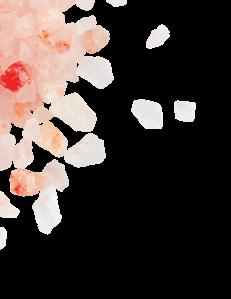 WRITTEN BY COCOA LANEY AND KRISTEN BOEHM
WRITTEN BY COCOA LANEY AND KRISTEN BOEHM
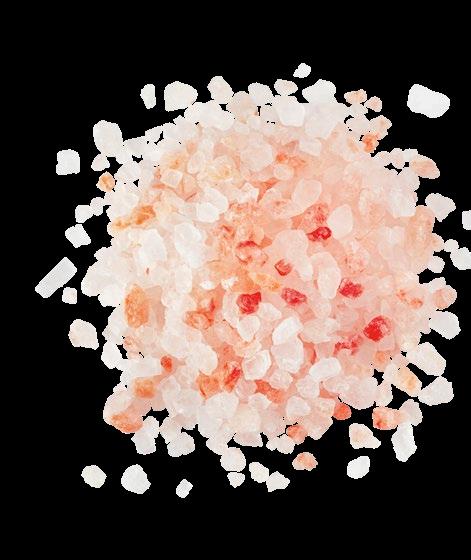

When you think of cocktails, does your mind conjure up images of tumblers full of amber liquid, an olive speared in a frosted martini glass, maybe even some lightly muddled greenery? Cocktails as we know them only really entered the drinker’s zeitgeist around the year 1800, and classic mixed drinks remain popular to this day. But after 200 years of spirits, water, sugar, and bitters, it’s time for a renaissance! Inventive bartenders from all over are reaching out for excitingly unexpected ingredients. We’ve rounded up some curious examples from local establishments, and go into detail about a few fun ways to expand your drink horizons at home.

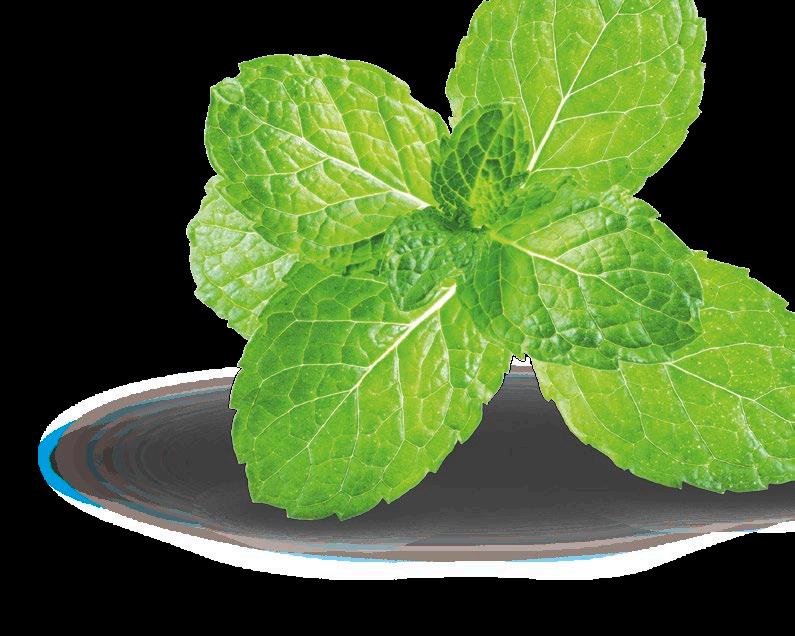
The Beatnik at Banter
The next time you make hummus from canned chickpeas, don’t drain away the water: That sticky yellow liquid is called aquafaba, and it makes the perfect vegan substitute for egg white. It can be whipped with sugar for meringue, combined with cocoa for a fluffy mousse, or even baked into egg-free macarons (yes, it’s possible!)— but our favorite way to use aquafaba is in a cocktail.

If you’re avoiding eggs, you don’t have to forgo fluffy cocktails— try the Beetnik at Banter instead. Banter is known for their vegetarian- and veganfriendly bites, so it should come as no surprise that their cocktails are also accessible to those who wish to avoid animal products. Moreover, Bartender Samuel Ross-Smith notes that aquafaba is easier to maintain on a day-to-day basis when compared with egg whites.
“Aquafaba is just a vegan alternative for egg whites, so it just helps the whole thing and gives a nice frothy texture,” says Ross-Smith. “[The Beetnik] is one of the only cocktails, if not the only one, that's been on the menu since we opened.”
This cleverly-named libation gets its signature foam from aquafaba, but that’s far from the only notable ingredient in this cocktail. The flavor comes from a combo of house-made beet and lavender shrubs, which are vinegar-based syrups (more on those on p. 46). The shrubs are then balanced with lemon, Strega liqueur, and London Dry Gin for a drink that’s earthy, herbal, and unexpectedly refreshing. It even comes served with a ring of beet sugar for added pizzazz. 114 Prospect St., Bellingham, banterhospitality.com



Smoke Signal at Redlight
If you’re aiming to add some spice to your life— or, more specifically, your cocktails— then Ancho Reyes liqueur should be a staple at your bar cart. This one-of-a-kind liqueur originated in Puebla City, Mexico and is made from the city’s most famous crop: ancho chiles, which are dried poblano peppers. But while a chile-based liqueur might be foreign to PNW palates, it’s actually a time-honored tradition. Ancho Reyes was first produced by Pueblas families in 1927, and today’s version is still based on this original recipe.
Want to try some for yourself? The Smoke Signal at Redlight utilizes not just Ancho Reyes but mezcal, house-made cinnamon/ nutmeg-infused bourbon, mole bitters, and a hint of sugar. Think of it like a spiced-up Old Fashioned, Oaxacan style.

“[It’s] the warm fuzzies and a glass,” says Bartender Ocea Davis, who created the Smoke Signal. “During the pandemic, when we had to have our ‘bubbles,’ I would always get together with my friends and have bonfires. We would just sit there for hours and talk about everything that was going on in the world. And so I wanted to come up with a drink that encapsulated the feeling of sitting around a bonfire commiserating with your best friends. I think that's exactly what we got.”
But the Ancho Reyes is’t the only unusual thing about this libation. While mezcal and bourbon aren’t often used in the same drink, they complement each other surprisingly well here, almost like “two different friends hanging out.” Between the rich bourbon, smoky mezcal, autumnal spices, and hint of heat, the Smoke Signals is the perfect cocktail for early fall. Stop into the new Redlight location on Grand Avenue to try one for yourself. 109 Grand Ave., Ste. 101, Bellingham, redlightathome.com




Oro Hazelnut Dessert Wine at Samson Estates

Allow us to state the obvious: Most wine is made from grapes. Certain wineries, such as Everson’s own Samson Estates, might use other fruits like strawberries, raspberries, and blueberries. But wine made from hazelnuts?! Such a concoction might sound unusual, but just trust us— hazelnut wine is nothing short of delicious, and you can try some for yourself at Samson Estates.
Samson Estates is the oldest operating winery in Whatcom County, and they’re well known for their award-winning fruit wines as well as traditional wines fermented from Eastern Washington grapes. But their most unusual offering is their award-winning Oro Hazelnut Dessert Wine, which is made with locally sourced nuts from Holmquist Hazelnut Orchards.
Unlike Samson’s other libations, hazelnut dessert wine isn’t fermented. According to Owner Rob Dhaliwal, it’s made similarly to a cordial, yet still fortified like typical dessert wines. As for the flavor profile? Unsurprisingly, the first descriptor that comes to mind is “nutty.”
“It does have a small smoking note to it because we use roasted hazelnuts,” Dhaliwal continues. “It's very velvety. It's not quite as intense as what you think of Frangelico; it's a lot more mellow and smooth.”
If you’re picking up Oro for a dinner party, Dhaliwal suggests pairing it with tiramisu, chocolate, eggnog, or a light-bodied pastry. Alternatively, stop by Samson Estates’ tasting room in Everson to pair your glass with artisanal wine truffles and picture-perfect pastoral views. 1861 Van Dyk Rd., Everson, 360.966.7787, samsonestates.com
Have you ever heard of a tayberry before? This unusual fruit is a hybrid between a raspberry and a blackberry, and because they can’t be machine-harvested, you’re not likely to spot them in grocery stores. You can occasionally pick up a punnet from the farmers market, but for a more adventurous experience, we recommend consuming them in the form of beer— particularly in the Spontaneous Ferment Tayberries and Plums by Garden Path Fermentation.
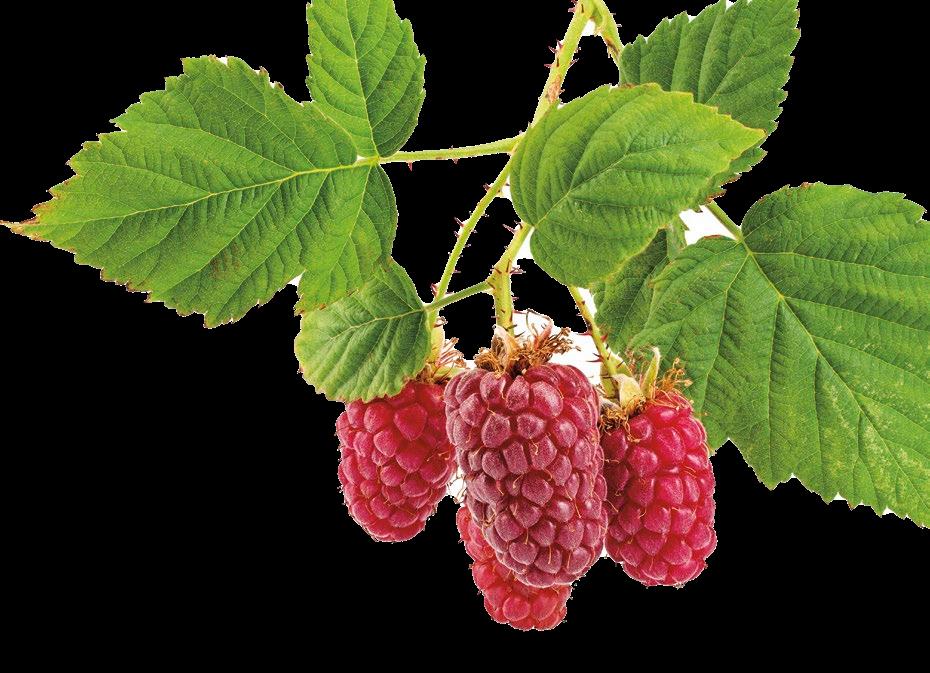

“[Tayberries are] really bright, really savory, and they're really, really hard to work with,” says Garden Path Co-Owner Amber Watts. “So this beer is 100% spontaneously fermented using yeast from the air, aged for several years in oak, and then we re-fermented it with tayberries and locally-harvested plums.”
The result is a beer that lines up perfectly with Garden Path’s goal: to create unique, tasty brews that make full use of Skagit’s abundant agricultural resources. Garden Path’s beers are fermented with 100% native yeast, and they’re one of the few breweries in the world that makes beer, wine, cider, and mead with such hyperlocal ingredients.
Watts says that creating spontaneous ferments is a years-long process, and in this case, the result is a beer that’s “a little bit tart, a little bit funky, but the berries are gonna shine through.” you can try it at Garden Path’s Burlington location, or stop into their newlyopened The Great Northern Bottle Shop & Lounge in Downtown Bellingham to sample other beers on tap (or pick up goodies to take home). 11653 Higgins Airport Way, Burlington, and 1319 Commercial St., Bellingham, 360.503.8956, gardenpathwa.com
 Spontaneous Ferment Tayberries and Plums at Garden Path Fermentation
Spontaneous Ferment Tayberries and Plums at Garden Path Fermentation
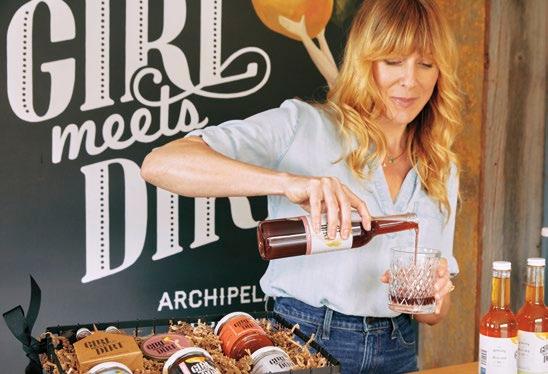 PHOTOS BY AMBER FOUTS
PHOTOS BY AMBER FOUTS
First of all, tell me a bit about yourself, how your business began, and the kinds of products Girl Meets Dirt offers.
Hello! I'm Audra Query Lawlor, the founder of Girl Meets Dirt. After leaving an accidental 10-year career on Wall Street, my husband and I moved to Orcas, leaving behind New York City in search of a slower pace of life. I’m also originally from the Pacific Northwest so this was a coming home of sorts— but a new and uncertain island life.
While I wanted to be an entrepreneur, I wasn’t willing to start just anything— it needed to feel inspired. When a neighbor offered the harvest of his 120-year-old stand of Bartlett pear trees, the lightbulb went off. A century ago, when Orcas Island was a fruit producing region, orchards were planted all over the island. Those heritage fruit trees are still producing fruit, but much of that fruit was simply falling to rot on the ground. Here was a beautiful story to tell: forgotten heirloom fruit, and abundance.
The Inn at Ship Bay kindly offered their kitchen during their closed days and dug in. We’re heading into our tenth anniversary this year and Girl Meets Dirt evolved to specialize in artisanal, farm-direct preserves, shrubs, bitters, and a new line of natural sparkling orchard fruit wines. We use locally sourced fruits to create single-varietal products that truly capture the unique terroir of Orcas Island, and reflect the remarkable journey that led us here.
What is a shrub, and how would you describe it to someone who’s never tasted one?
A shrub is a concentrated syrup made from vinegar, fruit, sugar, and often aromatics. It can be added simply to soda water, or mixed into a cocktail for a sweet, tangy complexity that instantly takes any cocktail up a notch.
In the American colonial period, shrubs were popular because it was an effective way to preserve fruits beyond their growing season. Shrubs fell out of favor as
refrigeration became commonplace, but they've recently seen a resurgence in the world of craft cocktails, with their unique balance of sweet, tart, and fruity flavors making them a popular addition to various drinks.
Your process and ethos are deeply rooted in the history and agriculture of Orcas Island. Could you elaborate more on the relationship you have with your ingredients, and how your business is so interconnected with life in the San Juans?
Our connection to the San Juan Islands is as deep as the roots of the fruit trees that grow here. I grew up boating in these islands, and feel the pulse of the sea in every orchard I visit, and each piece of fruit I harvest. Every batch of our preserves and shrubs reflects the unique flavors of the region, mirroring the environment in which the fruit is grown. We're not just creating delicious jams, shrubs, and wines; we're preserving the agricultural history of the islands and the stories of its heritage orchards.
What kinds of fruits do you commonly use to make shrubs, and do you have a personal favorite flavor?
We use a variety of fruits, depending on their availability and season. Some popular ones include our Rhubarb Shrub, Lemon Lavender, and Island Pear. As for my personal favorite, I'd have to say it's our Island Pear Shrub—it's got a unique blend of pear and fresh island bay leaf that creates a delectably herbal and fruity combination, great for combining with whiskey.
Do you have a favorite cocktail recipe (using a shrub) that you could share with us?
Sure! I’ve been loving egg whites in cocktails recently– so easy to do, but the finished product is so creamy and complex that it feels elevated. Here’s a fun, quick cocktail I’ve been making at home!

2 ounces bourbon
1 ounce Girl Meets Dirt Quince Shrub

½ ounce Fresh Lemon Juice
1 egg white
2 sage leaves
Shake the egg white with the ice for at least a minute, until foamy and white. Add one of the two sage leaves, the Quince Shrub, the lemon juice, and the bourbon. Shake again, then strain into a coupe glass and garnish with a fresh sage leaf. The sage lends a subtle earthiness that complements the unique honey flavor of the quince. Enjoy!
Jasmine Blossoms
Spill the Tea, The Black Cat
Floral garnishes aren’t just great because they look beautiful— some species are edible, and many add to the experience of a cocktail thanks to their lovely scents. The Spill the Tea from The Black Cat is tantalizingly refreshing already, with jasmine green tea infused gin, St-Germaine, lemon, and grapefruit bitters. The jasmine blossoms that come with the drink go perfectly with it, and add their sweet perfume to each sip.
Basil and Black Sea Salt
Ernest’s Omission, Keenan’s at the Pier
Fresh basil and gourmet black sea salt are powerful, distinct flavors, which join fresh grapefruit, lime, and tonic in this cocktail from Keenan’s at the Pier. Those strong and simple tastes compliment the complicated spirits of the drink, Singani 63 and Pimm’s No. 1. Salt in particular is an extremely popular garnish, as it affects every sip and changes how drinkers experience the alcohol.
The Royaltini, Fireside Martini & Wine Bar
You could make the argument that a mist is more ingredient than garnish, but ultimately the atomized rose water on top of this drink by The Fireside Martini & Wine Bar ties the everything off with a bow by adding just a hint of rose flavor and aroma. The Royaltini is made with house infused raspberry vodka, St-Germaine, muddled lime, simple syrup, and topped with sparkling Banfi Rosa Regale.
Peppercorn
Turnip the Beets, The Bistro at Shuksan
For when you really need extra kick, or want spicy without capsaicin heat, peppercorns are an amazing inclusion for your drink. Aromatic and colorful, they go perfectly with the other equally intense ingredients in the Turnip the Beets cocktail from The Bistro at Shuksan– vodka, beets, and lemon definitely call for a strong finishing touch!
Maple Syrup
Espresso Martini, Terramar Brewstillery
Depending on how you use it, maple syrup can be dissolved entirely into a drink or used to garnish the rim or sides of a glass, allowing for a slow release of its rich sugary kick. Terramar Brewstillery’s Speakeasy serves it up in their espresso martini, where it serves to deeply sweeten vodka, Samish Island Coffee Roasters espresso liquor, and cold brew.
Pepperoncini, Pickled Tomato, and Olive
Bayou Bloody Mary, Bayou on Bay
If there’s one drink that should always blow you away with its garnish, it’s a Bloody Mary. Famously serving as the first meal (and stiff drink) of the morning after, garnishes for this drink usually involve celery and other small, fresh veggies. Bayou on Bay rotates their garnishes for their Bayou Bloody Mary, which is vodka combined with their secret Bloody Mary mix, but on a given visit you could expect the show stopping, spicy, and tangy combination of pepperoncini, pickled tomato, and olives!
coffee menu, the drinks at the Foxhole are some of the most unique in Downtown Bellingham.
We were especially intrigued by the Coup de Grace milk punch, which is a take on an old-fashioned tiki drink called the Zombie. A Zombie uses three types of rum, grenadine, and three juices (grapefruit, lemon, and lime), and the Foxhole’s version also adds Falernum liqueur. There’s a few other key differences: Firstly, while a traditional Zombie is booze-forward, the Coup de Grace is much smoother thanks to a clarifying process using citric acid and milk.
The idea of whole milk in a tiki drink might sound unusual, but Bartender Jordan Jenson says won’t be able to taste it. You see, when a cocktail is clarified, the milk proteins bind to the molecules like polyphenols that are responsible for astringent, bitter tastes. These curds (and thus polyphenols) are then strained out to create a smooth, easy-drinking cocktail.
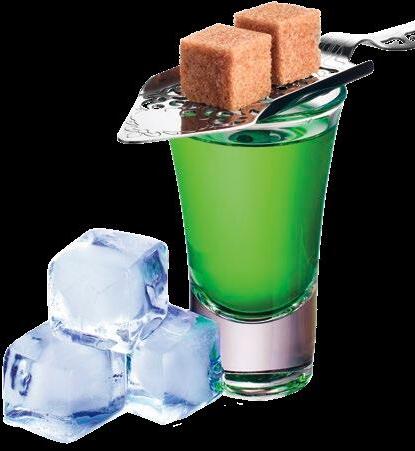
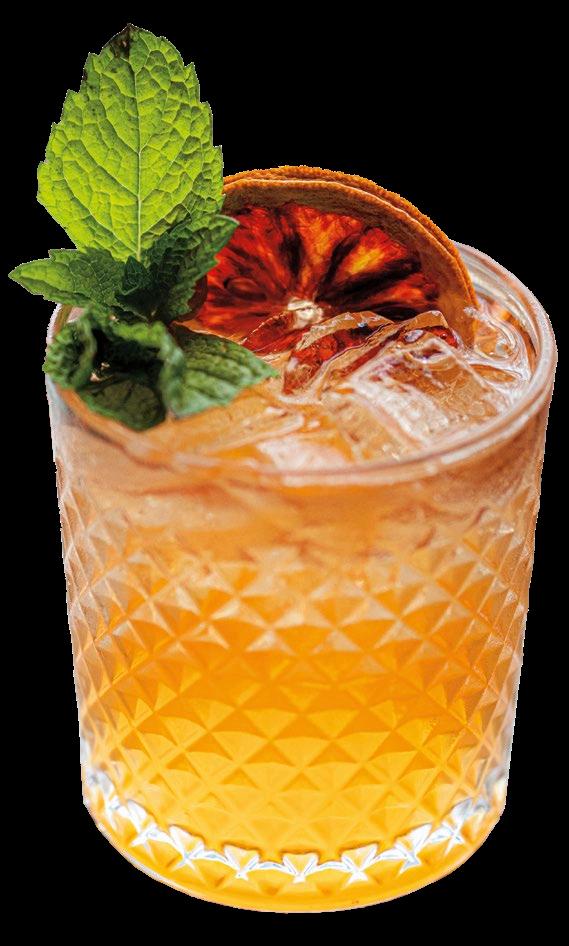
“It takes 24 hours to clarify, and it's just titrating the entire time,” explains Jenson. “When that process happens, and because you add the milk to it, it takes away the intensity of the drink and makes it a lot more approachable.”
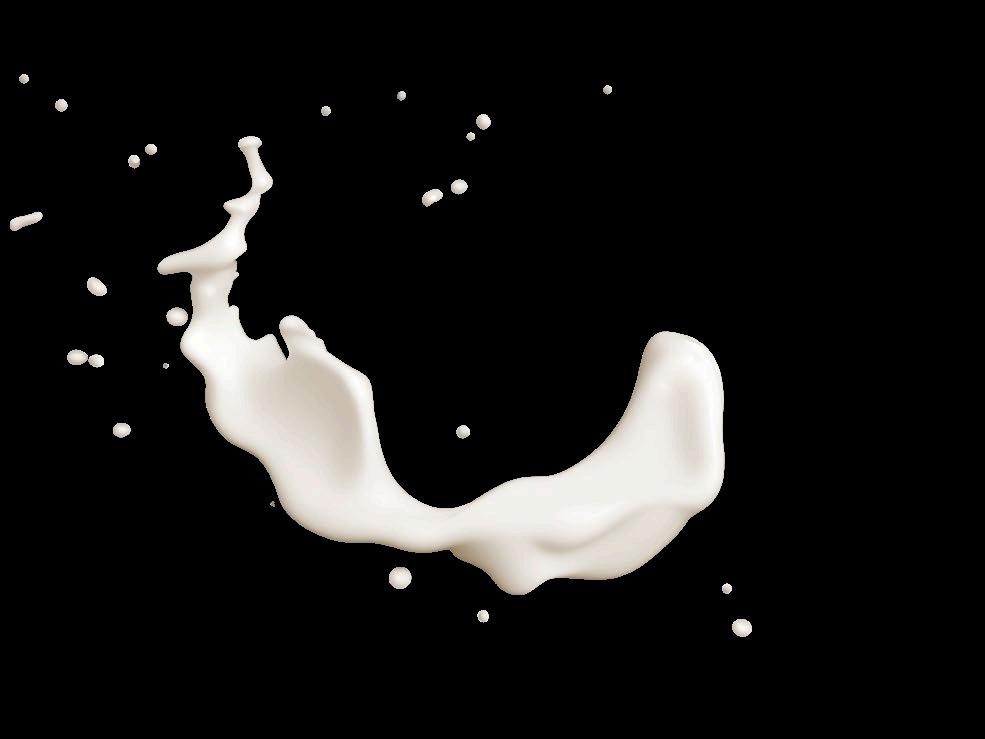
But the clarification isn’t the only interesting part about the Coup de Grace. This cocktail even includes a splash of absinthe, which is a wormwood-based liqueur often associated with dreamlike states and hallucinations (though these tales are myths, not reality). The Foxhole bills itself as an absinthe bar, which makes perfect sense when you consider its ethereal Victorian atmosphere. You can sample this anise-flavored spirit in the Coup de Grace, in other cocktails, or even via an absinthe “drip,” which dilutes the high-proof spirit with a touch of water and sugar.
215 W. Holly St., Ste. 101, Bellingham, @thefoxholebham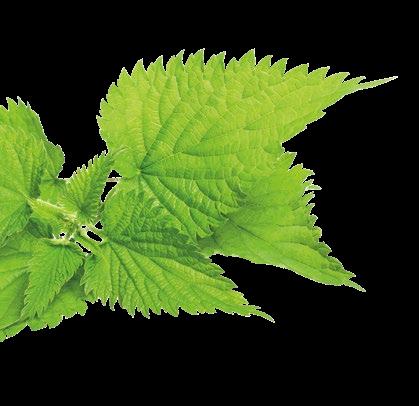




Stinging Nettle Martini at Matthew’s Honest Cocktails
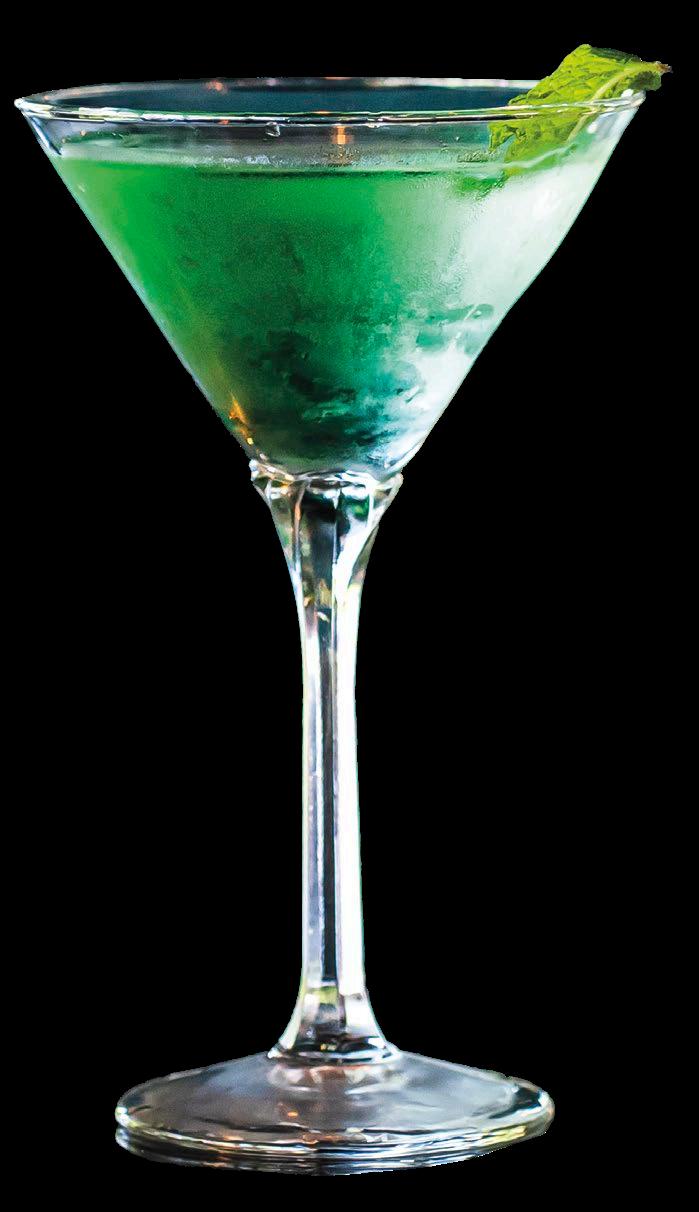
atthew’s Honest Cocktails is a mainstay among Downtown Bellingham’s upscale yet accessible bars, and while their drinks cater to all palates, they also aren’t afraid to get creative. Case in point: the Stinging Nettle Martini. No one looks forward to run-ins with stinging nettles on a hike, but in a cocktail? Prepare to be surprised.
This unusual libation starts off with a syrup that Owner Matthew Twining reduces from stinging nettle tea. It gets shaken up alongside simple syrup, lemon, and Botanist Islay Dry Gin to create an herbal, surprisingly complex cocktail that hits all the right notes with very minimal ingredients.
Twining is no stranger to tea in cocktails, as earl gray reduction is a constant on his menu. But while earl gray is a familiar flavor, most people don’t know what stinging nettles taste like— especially when served in martini form. Twining says that nettles have an earthiness (“almost like a minty mushroom”) that tastes somewhat gamey on its own but works well when brightened with
“Where do you go with cocktails since everything's been done? And I think the answer is not so much out but more inward,” says Twining. “So, let's get what we've got growing right here and see if we can make something delicious.”
As for how Twining procures those local nettles? The answer is simple: He forages them himself. In the summer, you can find him scouring the old growth forests near Sudden Valley for young, tender nettles that can be brewed into tea. He leaves their roots intact but does include some of the “tiny needle-like hairs” that contain their venom. This venom is safe to consume and doesn’t sting or itch, but Twining says he thinks it adds a certain “zing” to the final product.
“We do [the nettle syrup] once a year, and then it lasts for about a month. I kind of insist on having locally foraged nettles,” Twining says. “It's a strange ingredient, so it's not massively popular until people try it— and then they come back for it again, until it's gone.”
132 E. Holly St., Bellingham, 360.325.7802, matthewshonestcocktails.com
Not sure which wildcard ingredients to use the next time you’re feeling culinarily creative? Let Mother Nature decide for you! Foraging is a fantastic way to source wildgrown, unexpected foods and flavors. To get some insight, we spoke to Ryan Johnson, a local naturalist and expert.
Hello, can you please introduce yourself and Firecraft Northwest?
Hello! My name is Ryan Johnson! In 2021, I started a small business here in Bellingham called Firecraft Northwest. Through Firecraft Northwest, I lead various educational outdoor sessions. Some sessions take on a workshop format, and others are campouts, hikes, and excursions! Some of the major subjects I teach include survival skills like fire and shelter, plant identification and foraging, wildlife tracking, and even woodworking.
What is the range of things you are able to forage for around here?
We are very fortunate to have an incredible range of things we can forage for here in the Pacific Northwest (and Bellingham specifically!) Many of the polypore fungi (shelf fungi) make great medicines. Common roadside plants make great medicines too, like broadleaf plantain (Plantago Major), which is a great tool for insect bites and stings! As far as food goes, many of the berries and fruits make awesome desserts or trail snacks, and a lot of the leafy greens are excellent in salads. I'm a huge fan of making various teas from needles and plants at the end of a hike, too!
The deeper, old growth forest habitats provide understory greens, fruits, roots, and needles for teas. The meadows, floodplains, and swamps provide yet another blend of interesting foods, especially starches like cattail. Alpine and subalpine habitats, while fragile, potentially offer edible flowers, medicines, and roots as well!
What are some interesting or unexpected ingredients for a mixed drink that you can forage for?
A lot of members of the mint family would be great for a mojito! Huckleberries, black cap raspberries, and blueberries would be a really nice garnish or add-in for a vodka based drink. I haven't tried it yet, but I'm now thinking Spruce Tip Sugar Syrup would be so good! It could be used the same way bartenders use simple syrup, with a lemony zest!
“Find spots to harvest and forage that are legal (check what type of land you are on and if foraging is supported, or if permits can be purchased or requested).”
“Consider the use of the various land types and where you are harvesting. Does this spot have a lot of foot traffic? This could lead to garbage, various types of human waste and pollution, dog urine, et cetera. Would eating foods foraged here be safe or healthy?”
“Once you decide on a spot, be sure that you have the knowledge and confidence to harvest. Our safety is the No. 1 priority. If you aren't 100% certain on what you are harvesting, don't take it! We have food at home and we aren't relying on these calories for survival!”
“Finally, please consider the ethics and sustainability of harvesting at your spot. Will taking this food harm the population of this plant species? Is it invasive and removing it supports local habitats? Is there more than one? Does the patch or grove appear healthy? What kind of impact will I have on wildlife populations who depend on this food source?”
2 cups wild rose hips (best foraged in early autumn)



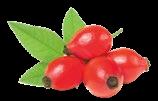
3 cups water
White sugar
Blitz rose hips in a food processor, then simmer them in water for 15 –20 minutes. Once simmered, strain the liquid through muslin or a cheesecloth. (You may need to repeat this process to ensure all debris has been removed.)
Once strained, measure your liquid and return it to a saucepan. For every ½ cup of liquid, add about 1/3 cup of sugar. Heat slowly and allow the sugar to dissolve, skimming off the top when needed.
Once sugar is fully dissolved, allow syrup to cool and pour into a sterilized mason jar or bottle. You can now use your syrup in everything from coffee and tea to— you guessed it— cocktails and mocktails.
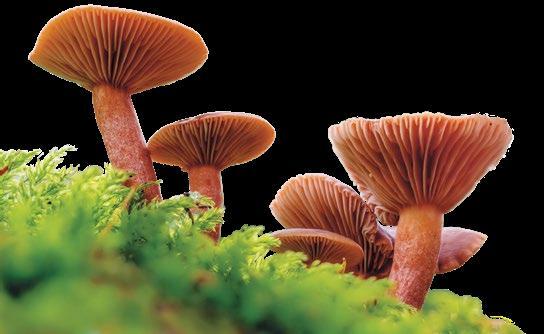

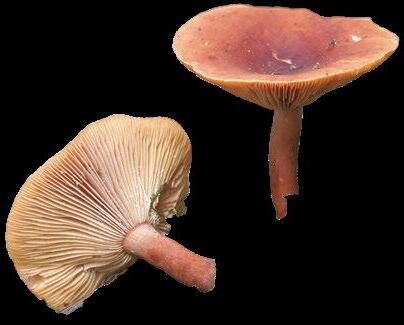

Captain Magpie Mead at Artivem Mead Co.
TThe idea of mead (honey wine) might conjure up images of medieval vikings drinking from golden goblets— but the folks at Artivem Mead Co. take a different approach. While they acknowledge and appreciate mead’s storied history, their main aim is to innovate, not recreate.
“[Mead is] the first alcohol fermented beverage,” says Co-Owner and Mead Maker Carlos Bassetti. “We like to reinterpret it through a modern lens for a craft focus. We try to make balanced meads that aren't too sweet and to reintroduce people to this ancient beverage.”
As a result, many of Artivem’s meads incorporate unexpected flavor notes, ranging from white chocolate to peaches, guava, and— in the case of the Captain Magpie mead— candy cap mushrooms. Captain Magpie is a raspberry/blueberry mead produced in collaboration with Full Throttle Bottle and Bottleworks in Seattle, and it was aged for 10 months in a barrel that once contained rum, then bourbon, then rum again. After the aging process, the team added perhaps the most noteworthy ingredient: candy cap mushrooms.
“Candy cap mushrooms are a foraged culinary mushroom that smell like maple syrup,” Bassetti says. “One of the guys from Full Throttle Bottles has a wild foraged mushroom connection, and so he hooked us up with that.” (Editor’s note: Want to learn even more about foraging mushrooms? Check out our mushroom guide on p. 64!)
One might assume that a mushroom-infused mead would taste earthy, but the Captain Magpie defies expectations. It’s a fruity, rich libation with subtle notes of maple, and unlike many meads, it’s not overly sweet. This kind of complex, interesting flavor profile is exactly what Bassetti is going for: While not everyone loves traditional mead, he aims to provide a “new experience” to those who are open-minded enough to give his creations a shot regardless.
So, even if you don’t think you like mead, you’d be remiss not to check out what Artivem has to offer. They’ve even branched into brewing traditional grape wines and ciders, meaning Bassetti and his team have something to please just about every palate.
1211 Granary Ave., Ste. 127, Bellingham, 360.726.2020, artivem.com

Honey is a natural luxury worthy of all the mythologizing it has received throughout history. It tantalizes every human sense, but particularly taste– the rich, sweet, and complex flavor of honey floods our receptors and signals that it is full of nutrients, precious, and good. Oh, and it happens to be delicious in cocktails— just ask Beekeeper Marisa Papetti.
Papetti’s company, Marie’s Bees, began with one hive around eight years ago, when Papetti was taking care of her grandmother full-time. As Marie’s Bees grew, they developed partnerships with local businesses, strengthened their relationships with customers, and expanded their operations. They now have eight regular employees producing environmentally sound honey from hives all over Whatcom County for buyers both local and nationwide.
So, what makes honey so endlessly enjoyable? For one, the flavors aren’t static. Papetti explains that raw honey is always a unique product of several natural circumstances.

“Nectar from plants and trees is actually what makes up honey. Pollen, high in protein, is collected for the [baby bees, and] mixed with a little honey,” she says. “Weather including temperature, wind, and rain drive the timing of plants to pollinate. This change is year to year, and some plants may pollinate more than others. This gives honey ever-changing complex flavors [and color].”
So even plain raw honey can vary in flavor based on if the bees were collecting from wildflowers, orange blossoms, or even fireweed (which creates a highly sought after honey that our region is known for). Beyond that, Marie’s Bees creates infused honey via a process called creaming.
“Raw honey in its pure form has a habit of crystallizing,” says Papetti. “Crystallized, liquid, and what we call seed honey (honey that has already been creamed) is mixed together at a slow and steady speed for several hours. This whips the honey into a spreadable, creamy froth that doesn’t like to recrystallize… Your honey stays spreadable with all the benefits of the raw honey intact.”
Marie’s Bees has seven creamed honeys currently available, including their awardwinning Zinger Creamed Honey (infused with lemon and ginger), Hot Creamed Honey (inspired by Nashville hot sauce), and the unexpected darling, Savory Creamed Honey (made with rosemary, thyme, and San Juan Island Sea Salt). These special blends are inspired in part by Papetti’s own use of honey in all sorts of foods.
“I love to come up with recipes,” says Papetti. “This summer we have been enjoying our Savory Creamed Honey, fresh squeezed lemon juice, and a little seltzer water over ice with or without vodka.”
Papetti isn’t the only one who loves adding honey to a cocktail! Bantam Kitchen & Bar has created a bespoke cocktail featuring Marie’s Bees Honey Oxymel, a liquid known as Fire Cider in the Eastern U.S. It’s a blend of raw apple cider vinegar from Apple State Vinegar, raw Marie’s Bees honey, and herbs and spices like elderberries and rosehips. The oxymel is combined with grapefruit-infused vodka, fresh grapefruit juice, Aperol, and lemon for a tart, sweet, and refreshing elixir. You can try the cocktail, called A Map to Get Lost, for the entire month of September at Bantam in Downtown Bellingham.
 Photo by Ben Scholtz
Photo by Ben Scholtz
Amendment 21
1224 Cornwall Ave., Bellingham, 360.746.9097
Follow us on Instagram @amendment.21
Located in the heart of downtown Bellingham at Hotel Leo, our Prohibition-Era cocktail bar is an intimate enclave with a happening happy hour and perfect for nightcap conversations. Pouring craft cocktails, local brews, and fine wines to complement our shareable bites menu.
Happy Hour
Tuesday–Saturday 4–6 pm
The Black Cat


1200 Harris Ave. #310, Bellingham, 360.733.6136 blackcatbellingham.com
Located on the 3rd floor of the Sycamore Square building, offering a welcoming charm overlooking the bay. Our social house atmosphere has been an attraction to locals and visitors for decades. It is the perfect place to share an intimate cocktail or enjoy Happy Hour with friends.
Happy Hour
Mon–Thurs 3:00–6:00pm Late Night 10:00–Close Nightly
Paso del Norte
758 Peace Portal Way, Blaine, 360.332.4045 www.pasodelnorte.net
Blaine's favorite Mexican restaurant Paso del Norte, has a full bar and lounge with an extensive selection of mixed drinks, wine, beer and specialty margaritas. Fresh, highquality ingredients are used in this family-owned restaurant serving locally-sourced, authentic Mexican cuisine. Live entertainment on the weekends!

Happy Hour
Mon–Thurs, 4:00–7:00pm Fri–Sat, 3:00–6:00pm, Sunday ALL DAY
Fireside Martini and Wine Bar

416 W. Bakerview Rd., Bellingham, 360.738.1000, firesidemartini.com
Fireside Martini and Wine Bar offers several unique libations which feature in-house liquor infusions as well as wine, local brews and cider. We provide something for everyone to enjoy including delicious food from our scratch kitchen and live entertainment. Outdoor seating is available.
Happy Hour
Mon–Sat, 3:00–6:00pm
Up for a night of carousing, or just a quiet drink with some friends? Here’s a handy list of North Sound drinking establishments to help you get your bearings. (All listings are supplied by the businesses.)
Galloway’s Cocktail Bar

1200 10th St., Ste. 102, Bellingham, gallowayscocktail.bar
Fairhaven’s favorite deco-era cocktail bar. Pulling inspiration from the 1920s, our curated cocktail menu and eclectic style shine through. Enjoy a food menu featuring shareable and tasty bites local microbrews and fine wines available. Enjoy outdoor dining on our porch overlooking the charming Fairhaven Village Green.
Happy Hour
3–6 pm Daily
Övn Wood Fired Pizza

1148 10th Street, Bellingham, 360.393.4327 ovnwoodfiredpizza.com
While Ovn Wood Fired Pizza is certainly known for using highquality ingredients and delicious flavor combinations in their food, this carries over into their incredible bar program as well. Beautifully crafted cocktails and an expanded outdoor seating area make this Fairhaven gem a must-stop spot.
Order Online
Packers Kitchen + Bar

9565 Semiahmoo Parkway, Blaine, 360.318.2090
semiahmoo.com/dining
Packers Kitchen + Bar is a classic waterfront eatery offering seasonal menus with hearth-fired dishes crafted from local farms and waters, as well as craft cocktails, wine, and local microbrews. Packers delivers a lively, friendly atmosphere, surrounded by stunning views. Located on the waterfront at Semiahmoo Resort.
Happy Hour 3–4pm Daily
B-Town Kitchen & Raw Bar
714 Lakeway Dr., Bellingham, 360.392.6520, btownkitchen.com

Featuring both indoor and outdoor seating (complete with a covered & heated patio and cozy fire pits!), we offer an extensive local craft draft beer selection, full wine list, and delectable signature cocktails like our Shaker Martini series.
Hours: Sun–Wed, 11:30am–10:00pm, Thur–Sat, 11:30am–11:00pm
Happy Hour 3:00–6:00pm Daily
Special Advertising Section